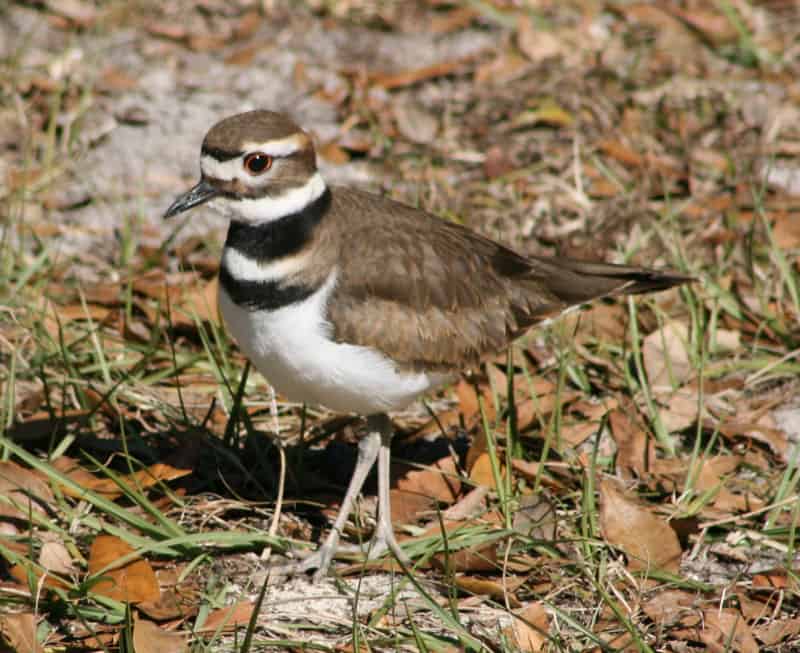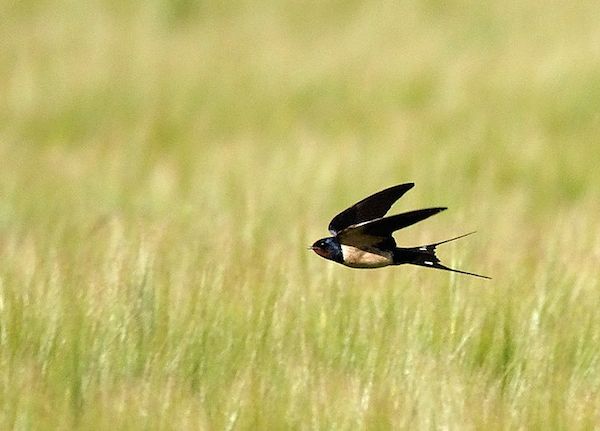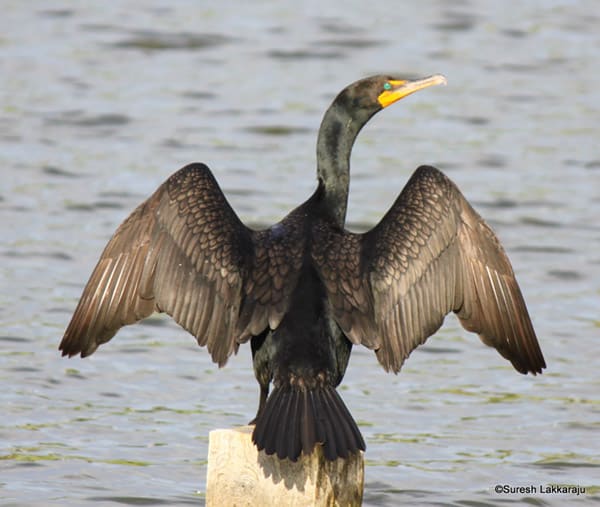On its white breast, two black bands stand out. Other plovers—such as the smaller but similar semi-palmated plover—have only one band or none at all. Otherwise, killdeer are wet-sand brown above and clear white below, with white around the front of the face and eye.
The killdeer is one of our largest and longest-tailed plovers, so even mixed with a few other species on a mudflat, they stand out, especially when you spot those two breast bands. Much of the tail is orange, except the tip, which is black punctuated with white dabs.
Listen for
The Killdeer is said to call its name as it flies, but really it sounds more like tee-deee, tee-deee. High-pitched and loud, the Killdeer’s call is hard not to notice (that’s why its Latin name means “vociferous”).
Find it
Unlike most other plovers, killdeer often forage or nest far from water. You may find them on ball fields and airport runways, on turf, in pastures, and in farm fields, as well as on mudflats. They are found throughout North America, but northern birds head south for the winter. In the South, only the Appalachians lose their killdeer during cold months.
Feed it
A farmer’s friend, the killdeer spends its foraging time searching for beetles, grasshoppers, caterpillars, and other insects. Crayfish, centipedes, spiders, and other invertebrates are also eaten, as well as some seeds.
Nesting Behavior
A simple scrape in the dirt or gravel (including gravel-covered roofs) will do for a killdeer pair, although they sometimes add embellishments, such as a lining of pebbles, grass, or other small materials. Females lay three to five blotched eggs, which both parents incubate for just less than a month.
Nesting in exposed habitats, killdeer rely on camouflage and deception to keep their eggs and chicks safe. If an intruder approaches the nest, an adult killdeer may feign injury—dragging a wing as if it is broken and exposing its bright tail—then lure the person or predator away from the nest.
Adults watch over their hatchlings, little puffballs that can run around and find food by themselves shortly after hatching. They can fly before they reach one month old.
WOW!
Killdeer perform a distraction display, to lure predators away from their nest, flopping around on the ground and faking a broken wing.
Listen to a Killdeer:




